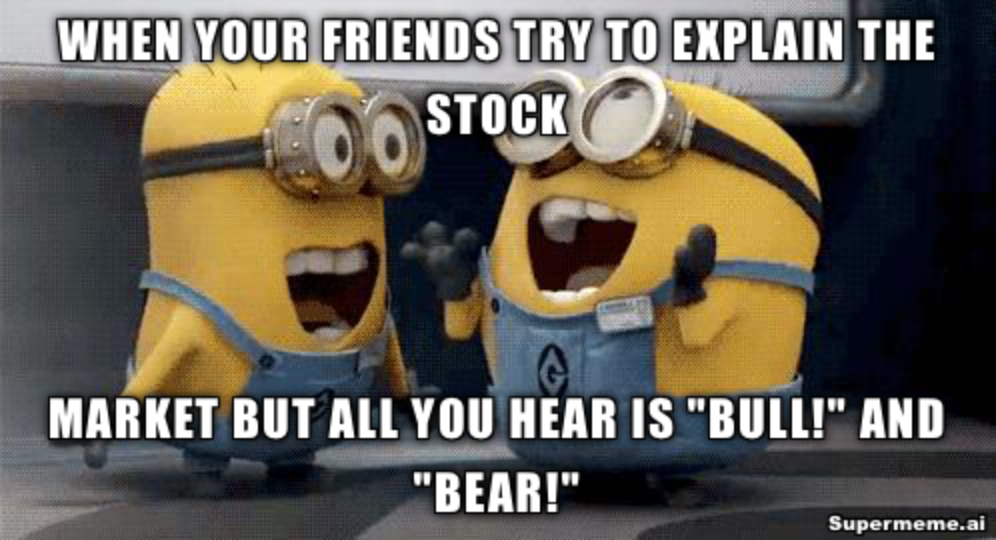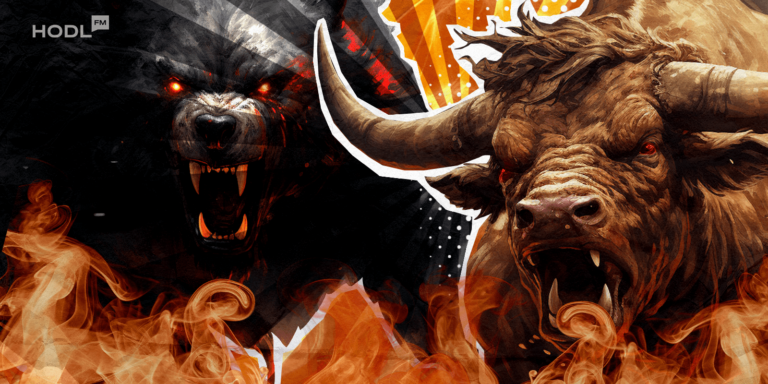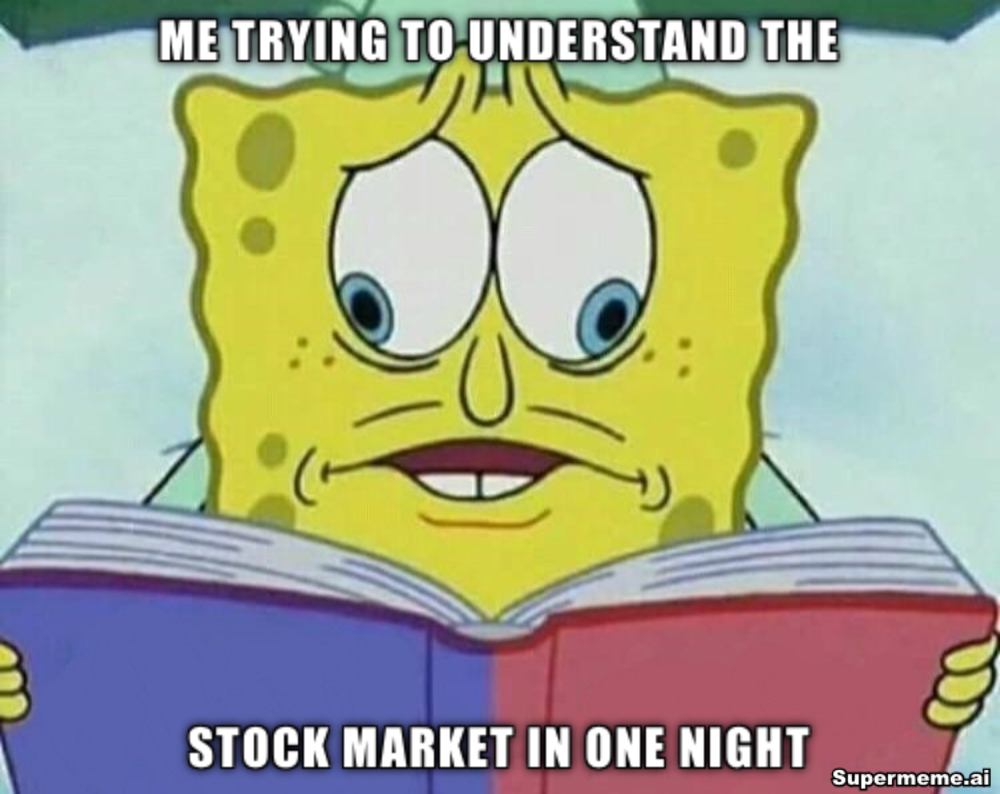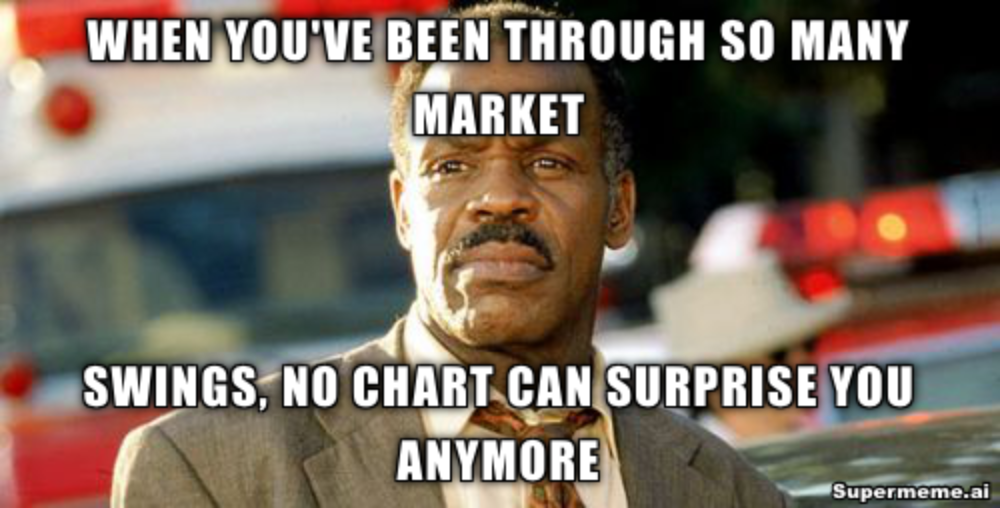When asset prices in the crypto markets increase or decrease significantly, you’ll hear the terms bull and bear market. However, you’ll rarely hear of training or a classroom that prepares folks for trading the last leg of a bear market that ends in panic or the last leg of a bull market that ends in hysteria.
Since the best scenario in the crypto market is neither the bull nor bear side but finding yourself on the place at the right time, this guide will help you understand the difference between bull and bear markets, where the names originated and how you should relate to both market phases.
Read More: Why is the Crypto Market Up Today?

Bull and Bear Market Definitions
Speculators and investors have sneaked two terms that are an integral part of stock market jargon, into the cryptocurrency market. The two massive animals, bulls and bears, are used to describe the dynamic movements of the financial markets.
According to Guardian, the terms bulls and bears as far as financial markets are concerned derive from how these stocky animals attack their opponents. Angry bulls use their pointed and sturdy horns to thrust their victims upwards. On the other hand, bears in attack mode swipe their potent paws downwards and injure their victims using their arms and sharp claws.
So let’s define what is a bull market so that no butcher runs in blindly hoping to make a killing – literally – from selling beef. It’s a condition within the cryptocurrency market during which asset prices are high or are expected to surge due to promising market conditions. The best example of a crypto Bull Run was during the COVID-19 pandemic when the price of Bitcoin surged from $4,000 in March 2020 and hit BTC’s all-time high of $69,000 in November 2021.
And what does a bear market mean? It refers to a market condition when asset prices fall over 20% below their most recent heights. Most people came to understand the bear market, meaning following the 2022 crypto winter when prices tumbled downwards, and the crypto winter is only beginning to end. Wisdom demands that a crypto trader learn to remain calm during such market crashes since a bear market isn’t synonymous with a bear attack.
Now that we’ve understood the meaning of bull vs. bear market meaning, we proceed to consider the numerous causes behind the bull and bear market, which may vary from time to time.
Bull Crypto Market: Causes and Indicators
A crypto Bull Run starts when buyers believe crypto prices will increase and remain there as a result of fundamental or technical analysis or the overall market sentiment. The heightened optimism from the buyers stimulates others into buying for an increased ROI and further hiking the asset prices.
The other factors related to bull markets that emerge from traditional financial systems include low unemployment rates and a strong gross domestic product (GDP). Favorable all-inclusive economic conditions and markets are critical factors that increase the chances of bull markets.
Characteristics of a Bull Market
The most classic signs of crypto bull markets include the following:
Strong Demand: Increased demand for a crypto asset with limited supply causes a price hike.
Market Confidence: The growing number of buyers causes a sustained market, creating a bullish market that keeps prices high.
Positive Media Presence: Constant positive headlines in online and mainstream media help to create awareness, increase adoption and attract more participants.
Economic Conditions: Nations with signs of an economic imbalance or a crash have people hedging their funds by buying crypto via crypto exchanges.
Bear Crypto Market: Causes and Indicators
Generally, bear markets begin at the first sign of an economic recession and are signaled by widespread business closures and high unemployment rates. The other common factors that trigger bear markets include hiring freezes, high inflation, and rising interest rates.
Panic selling within the crypto market incites fear among investors. As more investors begin offloading, the demand for the crypto assets decreases so that the oversupply overwhelms the market, and prices decline further.

Characteristics of a Bear Market
The most common indicators of a bear market include:
Low Trade Volumes: A sharp drop in crypto trading activities can indicate investors closing trades and holding onto their assets for fear of market uncertainty.
Negative Public Sentiments: Public sentiments and comments from traditional finance institutions can cause crypto asset prices to drop.
Backwardation: This refers to a situation where an asset’s current price becomes higher than the asset’s price in the futures market.
Other indicators include:
- When asset supply is higher than market demand
- Lack of confidence in the cryptocurrency market
- Growing distrust within the sector by leading financial analysts and economists
Investing Strategies for Bull Markets
Amid the mishmash between bullish vs. bearish tendencies, players in the crypto communities can deliberately play their cards and make profits. While market volatility may make it difficult for participants to predict the outcomes correctly, some ways of maximizing profits during bull markets include:
Stay Informed
Keep track of all happenings within the industry and the broader economic market that could affect the market.
Avoid the Hype
Take time to research to avoid getting swept up with excitement and making impulsive decisions; always consider the long-term potential of the assets you’re interested in.
Diversify your Portfolio
Spread your risk by investing in various cryptocurrencies.
Design an Exit Strategy
Set a stop-loss order or price target so you can manage risks safely.
Expect Market Corrections
Bull markets are still volatile, and since prices fluctuate quickly, always be prepared for the ups and downs.
Once the question about what is bull market gets off your radar, and you feel like navigating the scene with confidence, you can make that long-anticipated investment decision. However, you want to remember that any crypto investment carries inherent risks and must tread carefully.

Investing Strategies for Bear Markets
Buy the Dip
The bear market can be the best time to buy crypto because investors can buy the dip, meaning they can buy when prices are low and wait in the long term to sell when prices finally improve.
While there’s no guarantee that the strategy will work, buying the dip can help you accumulate crypto assets and benefit from potential price hikes.
HODL
Unlike the crypto trader’s girlfriend, who ended their relationship because he kept talking about HODLing instead of holding her, HODL is the act of holding on to your crypto assets, especially when there’s a crypto market downturn.
HODLing enables crypto investors who believe in the long-term potential of a crypto asset and are strong enough to weather the storms to benefit from price hikes over the long term.
Read more: How to HODL: Mastering the Art of Patience and Profits
As you can see, a trader’s risk tolerance, individual goals and investment environment determine the best strategy during bear vs. bull market situations. If the question should I buy cryptocurrency keeps nagging your brain, you need to do thorough research before making an investment decision.
Bull vs. Bear Market: Key Differences
There are several major differences between crypto bear vs. bull market conditions, which include the following:
Supply and Demand
Crypto bull markets are characterized by strong demand and limited or weak supply. Bear markets, on the other hand, have more sellers than buyers, therefore affecting prices negatively.
Market Scenario
A growing GDP is normally a good indicator towards a bull market, while a declining GDP could signify the beginning of a bear market. GDP mostly rises as people’s overall income and salary conditions improve. Any reduction in the same will mostly suggest people’s reduced spending abilities.
Impact on the Economy
Regarding what’s a bear market and its impact on the economy, it’s mostly associated with weakening economies. Economies get affected negatively when businesses cannot meet their revenue goals because consumers are not spending as had been anticipated.
On the other hand, bull markets happen when economies are strengthening, and there’s a corresponding increase in profits and people’s purchasing power.
Liquidity
Bull markets show high liquidity since there’s enhanced market confidence and a steady rise in return on investment. However, since bear markets are associated with a lack of market confidence and uncertainty, low liquidity enters the markets.
Investment Opportunities
Bullish markets sustain increasing asset prices, meaning local and international investors can take more risks as they are confident in the ongoing uptrend of the crypto market. On the contrary, reducing prices in bearish markets erode investor confidence and cloud even existing investment opportunities.
Conclusion
Having understood the difference between bull and bear market cycles, note that cryptocurrencies have historically gone through both. If learning what is a bear market has sent shivers down your spine, remember that cryptos have experienced several “winters” since their inception, and each one has been followed by a strong recovery cycle.
More Info:
So, are we in a bear or bull market? A clear understanding of which of these cycles we are in plays an integral role in the journey of every successful crypto investor. The secret to success lies in staying informed, upholding a long-term perspective, and diversifying your portfolio.
What’s relieving about confidently making informed decisions and navigating the bull vs. bear market? You’ll start collecting bitcoins and “mining your own business.”
Frequently Asked Questions
- What is bull and bear in the crypto market?
Bulls refer to a period when asset prices are consistently rising, driven by positive investor confidence and strong economies. Bears refer to an extended period of decline in asset prices by at least 20%.
- How long do bear and bull markets last in crypto?
On average, a bear market would last at least a year, but this could become shorter or longer based on the prevailing market factors and conditions. Such factors include corporate earnings, investment sentiments and economic data.
- Is crypto going into a bear market?
The most recent Bitcoin price predictions show a possibility of an increase in the asset’s price by at least 14%. With several technical indicators showing a Bullish sentiment for BTC and other cryptocurrencies, there’s every chance that we may not be going into a bear market.
- Who are bears in crypto?
Bears in crypto are individuals in the crypto world who approach issues with lots of caution. They are risk-averse; they analyze trends suggesting downturns and believe price falls will influence their decisions.
- How long is a bear market in crypto?
Crypto bear markets can last for extended periods, which could be several months or years. That happens mostly due to pessimistic sentiment from traders, investors and crypto fans.
- Is crypto still in a bull market?
There are numerous macro and regulatory risks surrounding the crypto market, even though they’re declining. Pundits believe we’re now at the height of a bull market’s “skepticism” phase, although the Crypto Fear and Greed Index indicate neutral.
- When will crypto winter end?
Considering that a typical crypto winter mostly lasts about four years, PayPal’s David Marcus believes the winter that began in 2023 could end between 2024 and 2026.
Disclaimer: All materials on this site are for informational purposes only. None of the material should be interpreted as investment advice. Please note that despite the nature of much of the material created and hosted on this website, HODL.FM is not a financial reference resource and the opinions of authors and other contributors are their own and should not be taken as financial advice. If you require advice of this sort, HODL.FM strongly recommends contacting a qualified industry professional.


